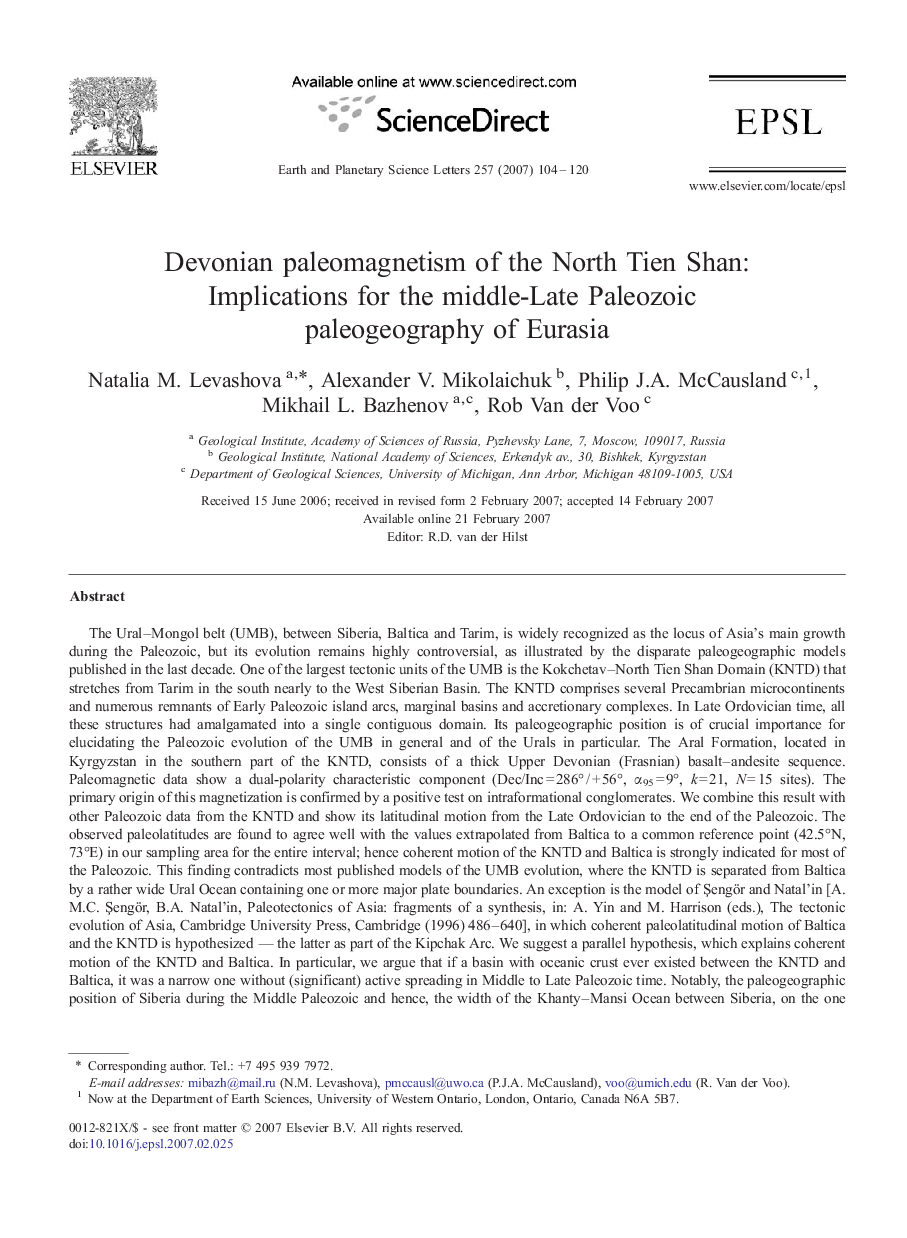| کد مقاله | کد نشریه | سال انتشار | مقاله انگلیسی | نسخه تمام متن |
|---|---|---|---|---|
| 4680499 | 1634921 | 2007 | 17 صفحه PDF | دانلود رایگان |

The Ural–Mongol belt (UMB), between Siberia, Baltica and Tarim, is widely recognized as the locus of Asia's main growth during the Paleozoic, but its evolution remains highly controversial, as illustrated by the disparate paleogeographic models published in the last decade. One of the largest tectonic units of the UMB is the Kokchetav–North Tien Shan Domain (KNTD) that stretches from Tarim in the south nearly to the West Siberian Basin. The KNTD comprises several Precambrian microcontinents and numerous remnants of Early Paleozoic island arcs, marginal basins and accretionary complexes. In Late Ordovician time, all these structures had amalgamated into a single contiguous domain. Its paleogeographic position is of crucial importance for elucidating the Paleozoic evolution of the UMB in general and of the Urals in particular. The Aral Formation, located in Kyrgyzstan in the southern part of the KNTD, consists of a thick Upper Devonian (Frasnian) basalt–andesite sequence. Paleomagnetic data show a dual-polarity characteristic component (Dec/Inc = 286° / + 56°, α95 = 9°, k = 21, N = 15 sites). The primary origin of this magnetization is confirmed by a positive test on intraformational conglomerates. We combine this result with other Paleozoic data from the KNTD and show its latitudinal motion from the Late Ordovician to the end of the Paleozoic. The observed paleolatitudes are found to agree well with the values extrapolated from Baltica to a common reference point (42.5°N, 73°E) in our sampling area for the entire interval; hence coherent motion of the KNTD and Baltica is strongly indicated for most of the Paleozoic. This finding contradicts most published models of the UMB evolution, where the KNTD is separated from Baltica by a rather wide Ural Ocean containing one or more major plate boundaries. An exception is the model of Şengör and Natal'in [A.M.C. Şengör, B.A. Natal'in, Paleotectonics of Asia: fragments of a synthesis, in: A. Yin and M. Harrison (eds.), The tectonic evolution of Asia, Cambridge University Press, Cambridge (1996) 486–640], in which coherent paleolatitudinal motion of Baltica and the KNTD is hypothesized — the latter as part of the Kipchak Arc. We suggest a parallel hypothesis, which explains coherent motion of the KNTD and Baltica. In particular, we argue that if a basin with oceanic crust ever existed between the KNTD and Baltica, it was a narrow one without (significant) active spreading in Middle to Late Paleozoic time. Notably, the paleogeographic position of Siberia during the Middle Paleozoic and hence, the width of the Khanty–Mansi Ocean between Siberia, on the one hand, and Baltica–KNTD, on the other hand, remains largely unconstrained, because of the paucity of high-quality Silurian, Devonian and Carboniferous paleomagnetic results from Siberia.
Journal: Earth and Planetary Science Letters - Volume 257, Issues 1–2, 15 May 2007, Pages 104–120